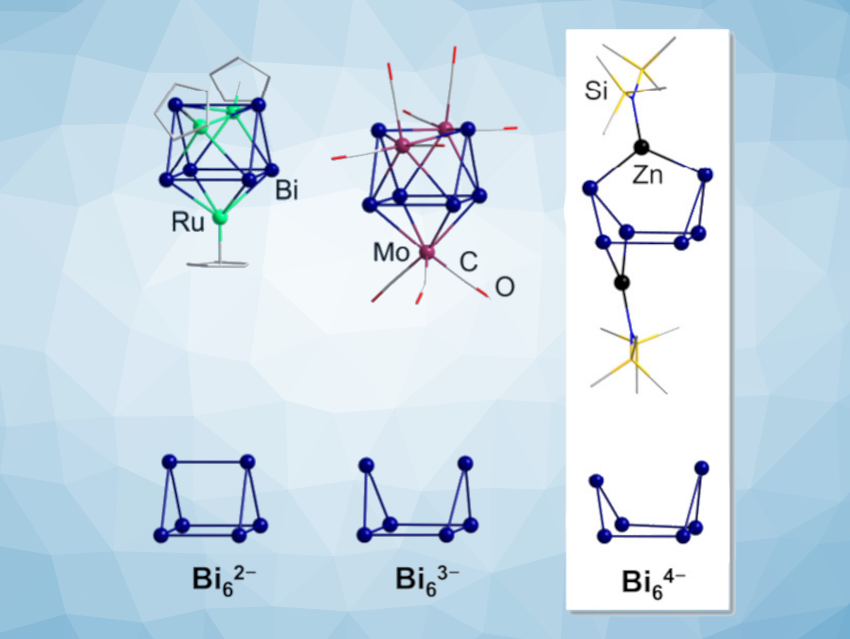Compounds based on polyatomic bismuth subunits are interesting research targets. Bismuth is a heavy, essentially nontoxic element with uncommon chemical and physical properties, including unprecedented bonding properties in some compounds. Zintl phases, which have polyanionic substructures, can contain polybismuthide units, with or without additional metals.
Bi6 subunits, for example, have been found in several compounds, and they can form, e.g. trigonal prismatic structures together with Ru, which become distorted when Mo-based fragments are used instead (pictured). Further distortion could lead to a boat-like shape (pictured above in the bottom right corner).
Florian Weigend, University of Marburg, Germany, Stefanie Dehnen, Karlsruher Institute of Technology (KIT), Germany, and colleagues have proposed that increasing the charge of the hexaatomic bismuth unit to give a formal Bi64− unit could lead to this distorted, boat-shaped substructure. The team confirmed this by synthesizing the cluster [Bi6{Zn(hmds)}2]2– (hmds = hexamethyldisilazanide) pictured above in the top right corner), which contains the theoretically predicted boat-like Bi64− unit. The Bi64− core is stabilized by two [Zn(hmds)]+ twelve -electron units in the cluster anion.
The desired cluster was prepared in the form of [K(crypt-222)]2[Bi6{Zn(hmds)}2]∙1.5THF ((crypt-222 = 4,7,13,16,21,24-hexaoxa-1,10-diazabicyclo-[8.8.8]hexacosane, THF = tetrahydrofurane) from either [K(crypt-222)]2(TrBi3)∙en (Tr = Ga or In) or [K(crypt-222)]2Bi2 with [Zn(hmds)2] in THF. The product structure (cluster anion pictured above in the top right corner) was confirmed using X-ray crystallography. Overall, the work highlights that the charges and structures of Bi6-type subunits in heterometallic clusters are responsive to the transition-metal complex fragments coordinated to them.
Affecting Charges and Structures of {Bi6} Architectures by 12‐Electron Transition Metal Fragments,
Stefanie Dehnen, Andreas Schmidt, Julia Rienmüller, Florian Weigend,
Angew. Chem. Int. Ed. 2024.
https://doi.org/10.1002/anie.202417234




